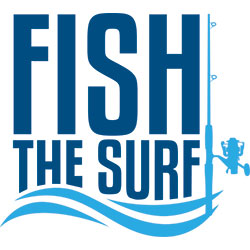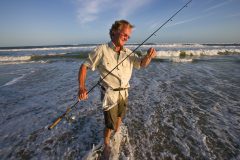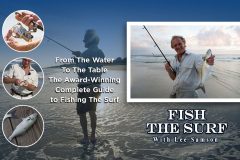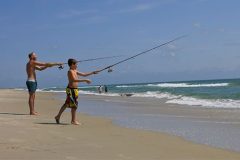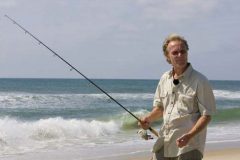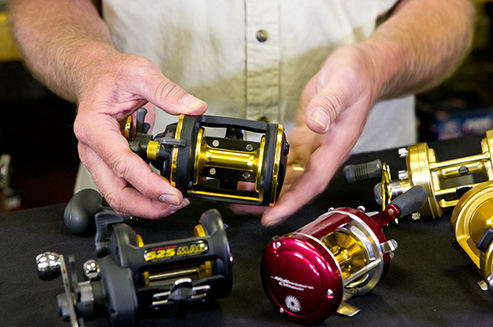
History and Allure
The earliest depictions of “anglers”, as yet discovered, date back thousands of years and include both ancient Egyptians and Chinese using a rod, a line and an angle – a material bent to the shape of a hook. With this thought in mind, it is not difficult to imagine more prehistoric tool-shapers the world over having grasped this concept and having applied it to their survival, despite those occurrences having no written or painted record.
It is clear that the devices, methods and general experience of angling have benefitted from centuries of considered thought, discovery, innovation and experimentation. And, owing to advances in science, technology and communications, both the development and the general awareness of every aspect of angling have accelerated beyond anything imagined prior to our lifetimes.
But, no matter how widespread or accessible these advances have become, the value and the pleasures of angling are, at the most fundamental level of our experience, deeply personal. The process of gaining knowledge and skill is often born of trial, error and insight. And on this very personal level is where it will be known and felt and remembered, making the process itself a singularly important element of the allure the sport holds for us. This is true, importantly, both in our own experience and in that which we share, whether that be among friends or engaging the next generation in discovering our sport.
Another personal element is embodied in the instruments we employ – rods, reels, tackle of many kinds, terminal tackle. At their core, our preparation and maintenance of our equipment, the knots we tie, the uses to which we put our instruments – these are all part of the experience and the choices we are afforded.
It is likely that when Benjamin Disraeli stated: The secret to success in life is for a man to be ready for his opportunity when it comes, he had something in mind of greater consequence than time spent fishing.
Nonetheless, its relevance to us as sportsmen and women remains. We have, each and all, found ourselves at some time, a victim of our own impatience or lack of thought about where we are, what we’re doing, or how we have approached it. And, conversely, we have enjoyed the successes resulting from our preparations and our discoveries.
In terminal tackle, particularly, we may most visibly see that there are some essential, fundamental aspects of craft which transcend time, place, and development. And in these many presentations – in lures, rigs and flies – the allure of fishing takes on its most tangible form.
Lefty Kreh’s Deceiver pattern is quintessentially representative of two indispensable components of not only a fly, but of all fishing tackle of any type. First, it is effective – in its use, its applications and the results it produces in a number of conditions and for a wide variety of species. Second, it is adaptable. Many an angler who has used this renowned creation has also, in the words of Angelo Peluso, “…tweaked it a bit to suit our own preferences and needs, and that is the true beauty of the fly – it lends itself to tinkering.”
In this same vein we can view the commercial re-emergence of the classic wood plugs. These are floaters, swimmers and divers spawned by the creative and dogged craftsmanship and, I would suggest, by the productive play of enthusiasts the world over. They did not wait for popular or commercial interests to look with approval on their endeavors, but heeded, instead, a voice within.
Let’s stay with this notion a moment longer, and consider the clever minds who first carved or fabricated molds and then poured into them tin or lead, giving form to the first elongated diamond shapes to mimic a squid. These shapes somehow contained, defined and expressed the essential attraction of the features they sought to emulate.
The technologies of fabrication, of synthetics, of plastic and paint and foil – all these have contributed to seemingly infinite invention and variety in terminal tackle. But, as we admire these attainments, it is important to retain somewhere in our thinking the notion that the original, primitive creations, and the methods employed, caught fish back then, and they still do.
Perhaps this is a good moment to give a thought to the incredibly realistic features of some modern lures. In a lure, the conceptual similarities to a bait offered by a flash of reflected light from a spoon, or the form and displacement given a water’s surface by a fly, may create an urgent and instinctive response in a fish. But what is the final effect when a lure has so perfectly mimicked the natural bait that it also incorporates all those features which nature has spent millennia developing, just to assure the very survival of that same bait? A fine line to consider.
I make no claim to authority on these subjects; I am an amateur, in that word’s most literal sense. My commentary draws from the experience of fishing generically, from spin fishing more specifically and from observation and study. I leave a more thorough treatment of the particulars of fly-fishing to others, as it is a subject whose exploration I have only begun.
That said, I find this thought relevant: At some point, Lefty Kreh and Bob Clouser merged Bob’s minnow pattern with Lefty’s Deceiver, and in so doing they created a prototype for a whole new breed of fly – one which has been given a hundred subtle changes in size, weight, form and color – and these reanimations have found the widest possible array of use.
This transcendence of salt or fresh-water application, this abstract form given to a mimicry of natural baits, the thoughtful approaches to presentation and variation in method; these all are reflective of a mind-set, a philosophy, and a joyful pursuit which is equally shared by the creators and adherents of any other methodology, lure or tackle. And the collaboration, the interest in and the sharing of knowledge and experience exhibited by these men, is relevant and useful in anyone’s tackle box.
Whether purchasing or tying our own flies; whether buying, constructing or modifying our own lures, rigs, or gear of any kind; it is thinking about and playing with these tools, their applications, the techniques and presentation of our tackle and gear; and it is merging this body of thought with our own experience and understanding of the environments we visit and with our observations of the condition and behavior of fishes and naturally occurring baits; it is this merging, I repeat, which offers not only a more profound enjoyment and a more rewarding experience, but the very real possibility of enabling our own contribution to the wider body of knowledge we share.
There is art here, in creation, adaptation, in performance, and in intuition. Perhaps this is, in essence, the allure which has served us throughout the sport’s history, and our own.
